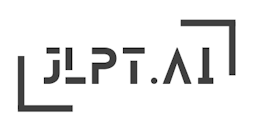

N3
音読み:han
訓読み:okasu, okashii
ハンhan
おか.すokasu
おか.しいokashii
Crime, violate
Imagine a dog (犬) running off its leash and causing chaos by committing crimes. The dog represents the act of violating the law, emphasizing the negative aspect associated with the kanji '犯'.
The kanji '犯' is a moderately recurring character in JLPT materials, often seen in the N3 and higher levels. Its understanding is important for both kanji comprehension and vocabulary sections.
彼は法律を犯して逮捕されました。
He was arrested for breaking the law.
かれはほうりつをおかしてたいほされました。
kare wa houritsu o okashite taihosaremashita.
私は決してルールを犯しません。
I never violate the rules.
わたしはけっしてるーるをおかしません。
watashi wa kesshite ruuru o okashimasen.
彼は犯罪者ではありません。
He is not a criminal.
かれははんざいしゃではありません。
kare wa hanzai-sha dewa arimasen.